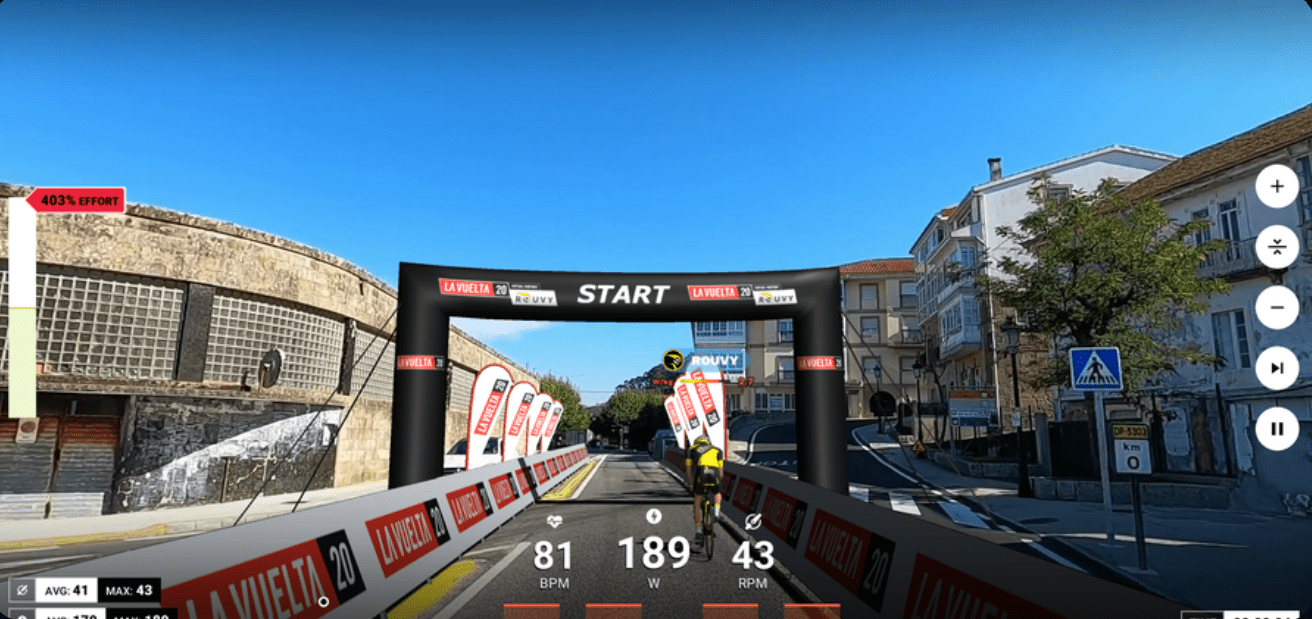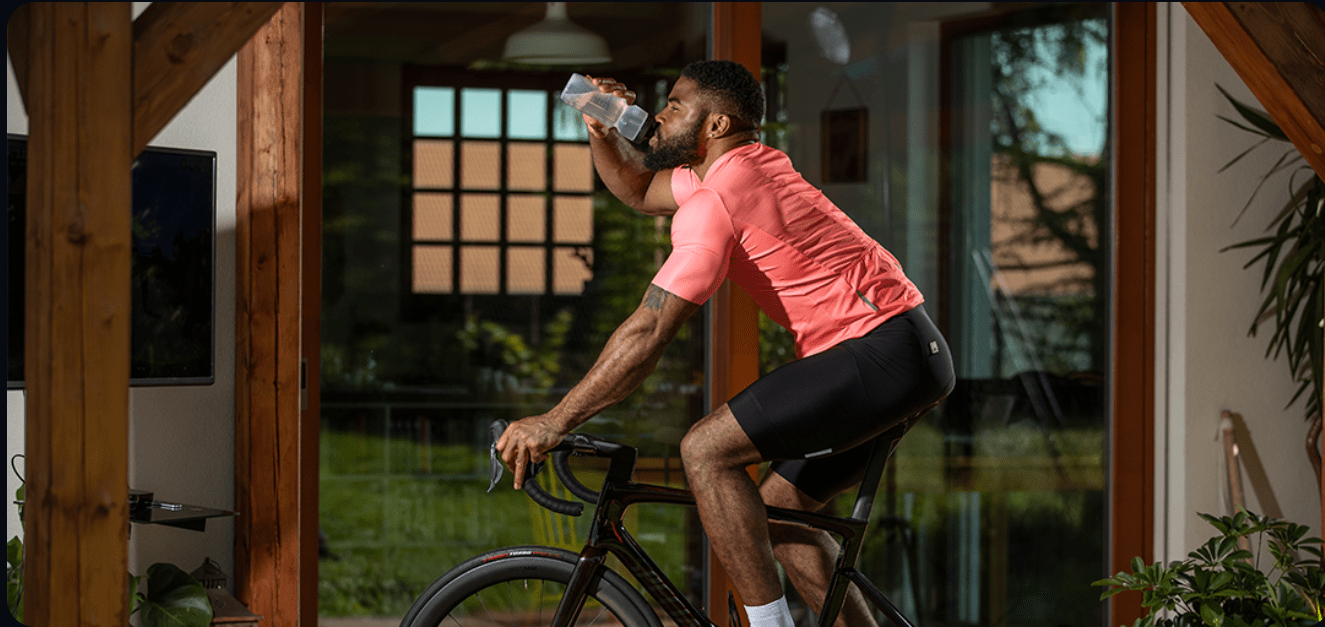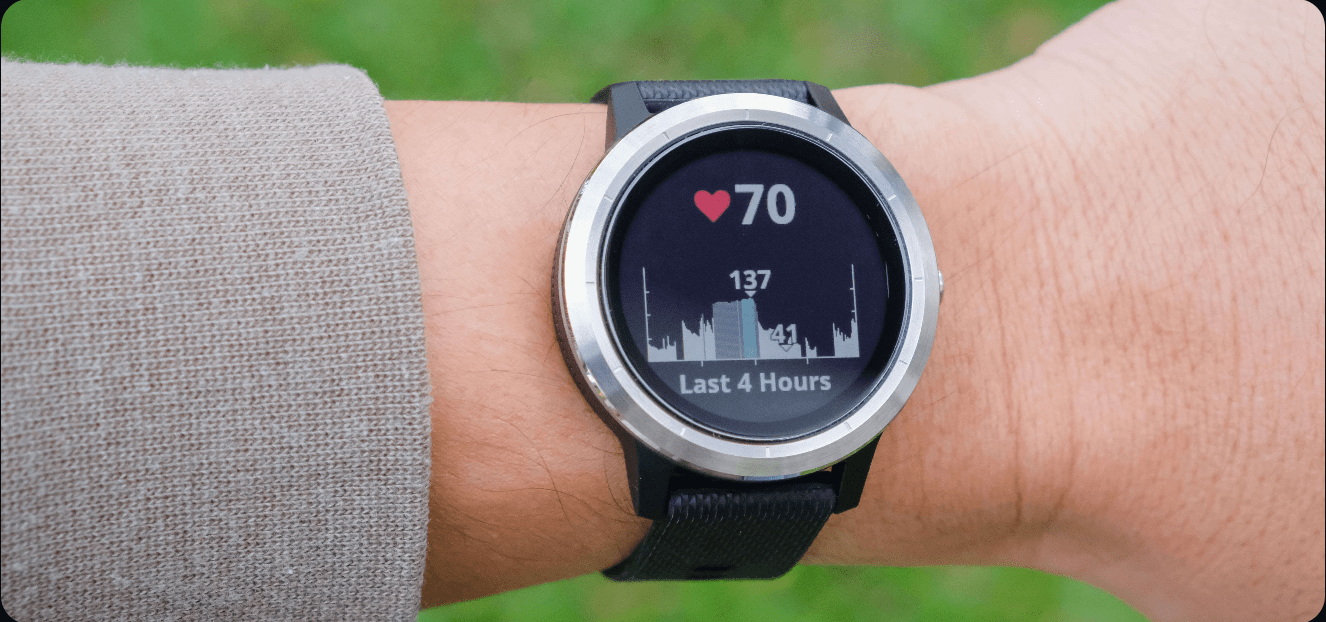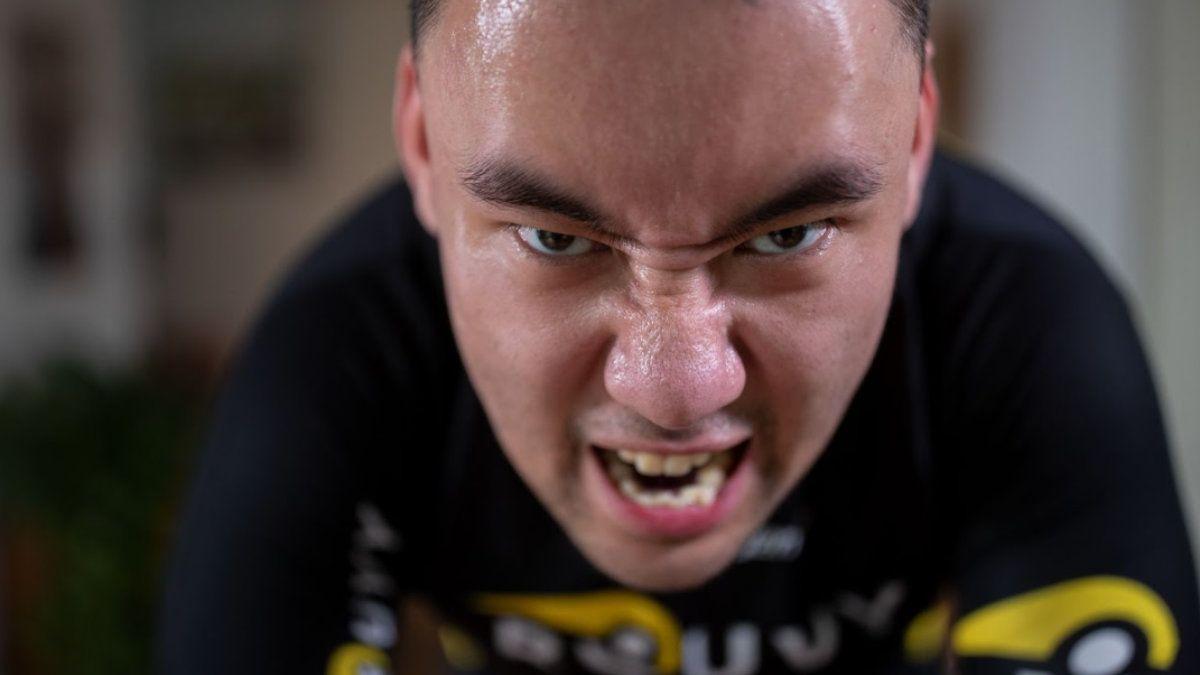Most cyclists think of their “sweet spot” as the chair in the cafe where the coffee’s perfect, the sun hits just right, and the slice of cake is twice as big as it should be! But in training terms, the Sweet Spot is something very different. Sweet Spot training serves up some of the most potent and time-efficient performance gains you can get on a bike.
Sweet Spot training is about riding in that “Goldilocks zone” – not too easy, not too hard, but just right. It’s tough enough to drive major adaptations, yet not so draining that you can’t repeat it consistently. For busy riders who need the most from their training hours, this balance is golden in terms of Sweet Spot.
So, who should use it? In truth, almost every cyclist:
Intermediate and advanced riders who want a smarter way to progress.
Time-crunched athletes juggling training, work, and family.
Racers who need late-race resilience and the ability to sustain high power.
Gran fondo and sportive riders looking to hold steady effort across long climbs.
From my own coaching experience, I’ve seen Sweet Spot training transform performance across the board. From national champions to professional riders I work with, all have credited Sweet Spot for its ability to bring solid adaptive improvements which are reflected in their results.
At the same time, sportive riders I coach with only six hours a week to train have gained fitness that would normally take double that time with traditional endurance rides.
The other reason Sweet Spot has become so popular? It’s effective – and fun – doing this sort of training indoors. Riding on ROUVY allows you to hold your Sweet Spot zone while experiencing immersive routes, pacing against ghost riders, or following structured intervals that keep you locked in the right range. ROUVY’s blend of real-world video and data precision makes Sweet Spot training more engaging, and far more repeatable.
What is Sweet Spot training?
At its simplest, it’s riding at around 88-94 percent of your Functional Threshold Power (FTP). If you’re training by heart rate, it’s roughly 85-95 percent of your threshold HR. It should feel like a strong, steady effort – not sprinting, not easy spinning, but the kind of “comfortably hard” pace you can hold for 15-30 minutes if you’re focused and fuelled.
To understand Sweet Spot, you need to place it among the training zones:
Zone 2 (Endurance): Great for aerobic base, but requires long rides.
Zone 4 (Threshold): Boosts FTP directly, but drains you fast.
Sweet Spot (between Tempo and Threshold): Combines the endurance benefits of Zone 2 training with the power-building benefits of Threshold – at a fraction of the fatigue cost.
The physiology backs this up:
Mitochondrial biogenesis: Sweet Spot promotes the creation of mitochondria, the “power plants” of muscle cells. More mitochondria equals more efficient energy production.
Lactate clearance: Riding here trains your body to recycle lactate more effectively, delaying fatigue.
Capillarisation: More capillaries deliver oxygen and nutrients to working muscles.
Fuel economy: Sweet Spot improves how efficiently you burn glycogen, which means more endurance before you fatigue.
Some call Sweet Spot the “grey zone,” not easy, not hard. But decades of coaching, plus research papers, show that it’s a training gold mine. Done consistently, you can use it to increase your FTP, boost your endurance, and build durability.
Key benefits of Sweet Spot training for cyclists
The benefits of Sweet Spot training go far beyond saving time. Here’s why I build it into the plans of riders I coach – from pros to weekend warriors.
Time efficiency
If you’re limited to 6-8 hours per week, Sweet Spot lets you squeeze the most out of each ride. A 90-minute Sweet Spot session can deliver similar aerobic benefits to a three-hour Zone 2 ride.
I coached one sportive rider who simply couldn’t commit to long weekend rides, so we implemented a plan whereby he could get the most out of his available weekly time. By focusing on Sweet Spot during the week, he finished his 160-kilometre event stronger than when he was doing double the hours.
Raising FTP
Sweet Spot is close enough to threshold to nudge your FTP upwards without the crushing fatigue of constant Zone 4 work. One of my cyclocross athletes added Sweet Spot sessions mid-week. Within eight weeks, his FTP rose by 20 watts, enough to keep him competitive deep into races.
Fatigue resistance
Endurance isn’t just about lasting long; it’s about producing power when tired. Sweet Spot trains your body to keep working efficiently at near-threshold levels even after hours in the saddle. For a regional road champion I worked with, Sweet Spot was the difference between just surviving late-race climbs and having the legs to attack.
Mental resilience
Sweet Spot isn’t glamorous. There’s no dramatic sprint finish or epic long-ride story. It’s steady, controlled, often indoors. But that discipline is exactly why it works. Riders learn to “lock in” and sustain discomfort for longer durations. I’ve seen athletes who used to crack in races develop calm, controlled focus thanks to repeated Sweet Spot efforts.
How to determine your Sweet Spot training zone
Training effectively means knowing your FTP and setting your zones accurately. Here’s how:
Step 1: Test FTP
- 20-minute test: ride all-out for 20 minutes, take 95 percent of the average power.
- Ramp test: increase power every minute until failure; an algorithm calculates FTP.
- ROUVY FTP test: built directly into the app with structured guidance.
Step 2: Set Sweet Spot range
- Power: 88-94 percent of FTP.
- Example: The Sweet Spot range of a cyclist with an FTP of 250 W would be 220-235 W.
- HR: 85-95 percent of threshold HR.
Step 3: Choose your tools
- Smart trainers plus the ROUVY app make it simple.
- Power meters and heart-rate monitors keep you focused on your training zones.
- From my coaching, I often see riders overcooking Sweet Spot sessions, drifting into threshold zone. Indoors, ROUVY ensures you’re locked exactly where you need to be.
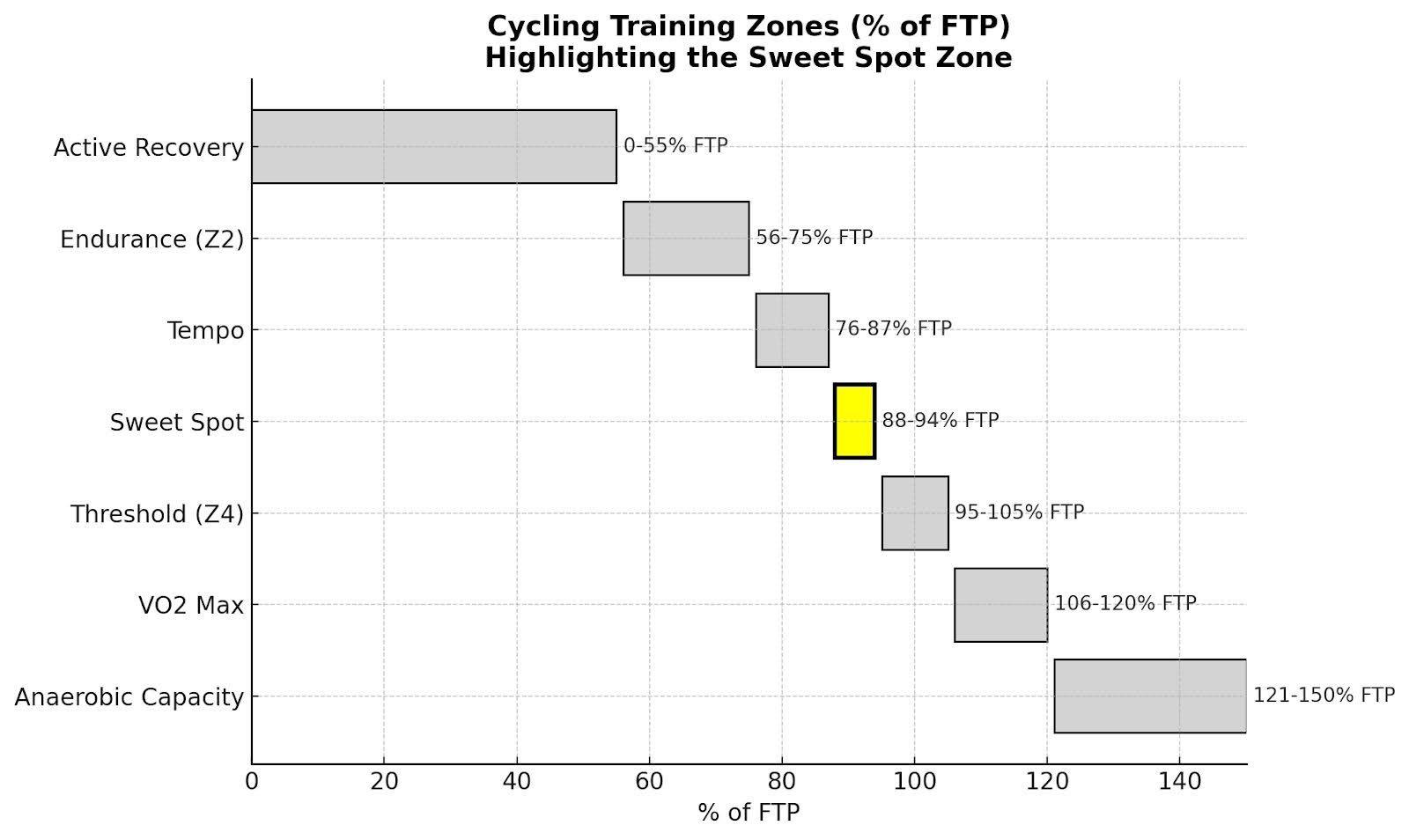
Sweet Spot interval workouts: Examples and execution
Now let’s get into the practical side: Sweet Spot intervals. These workouts form the backbone of Sweet Spot training.
Classic sessions
- 2×20 minutes at 90 percent of FTP (5-10 min recovery). The gold standard.
- 3×15 minutes at 88-92 percent of FTP (5 min recovery).
- 4×10 minutes at 92-94 percent of FTP (5 min recovery).
Progression plan
- Week 1: 3×10 minutes.
- Week 2: 3×12 minutes.
- Week 3: 3×15 minutes.
- Week 4: 2×20 minutes.
This gradual build is perfect for new Sweet Spot riders.
Variations
- Over-unders: Include sets that alternate 2 minutes at 95 percent of FTP with 2 minutes at 85 percent, and include recovery between each set. This builds lactate clearance.
- Pyramid intervals: 5-10-15-10-5 minutes at Sweet Spot.
- Sweet Spot + sprints: Finish intervals with 15-second bursts for neuromuscular sharpness.
Coaching tips
From my experience, riding Sweet Spot at a higher cadence (90-110 RPM) produces better results over time. It helps to improve pedalling efficiency and reduces muscular fatigue. Nailing the higher cadence will also improve your climbing efficiency and leave you with more in the tank at the latter stages of a race or challenge.
Common mistakes
- Thinking “Sweet Spot isn’t hard enough”: Many riders struggle after just a few minutes. If you’re new to this training zone, start with 5-minute Sweet Spot intervals and build up the durations and numbers of sets.
- Surging above threshold: This defeats the purpose.
- Overloading weekly volume: Two or three sessions is enough.
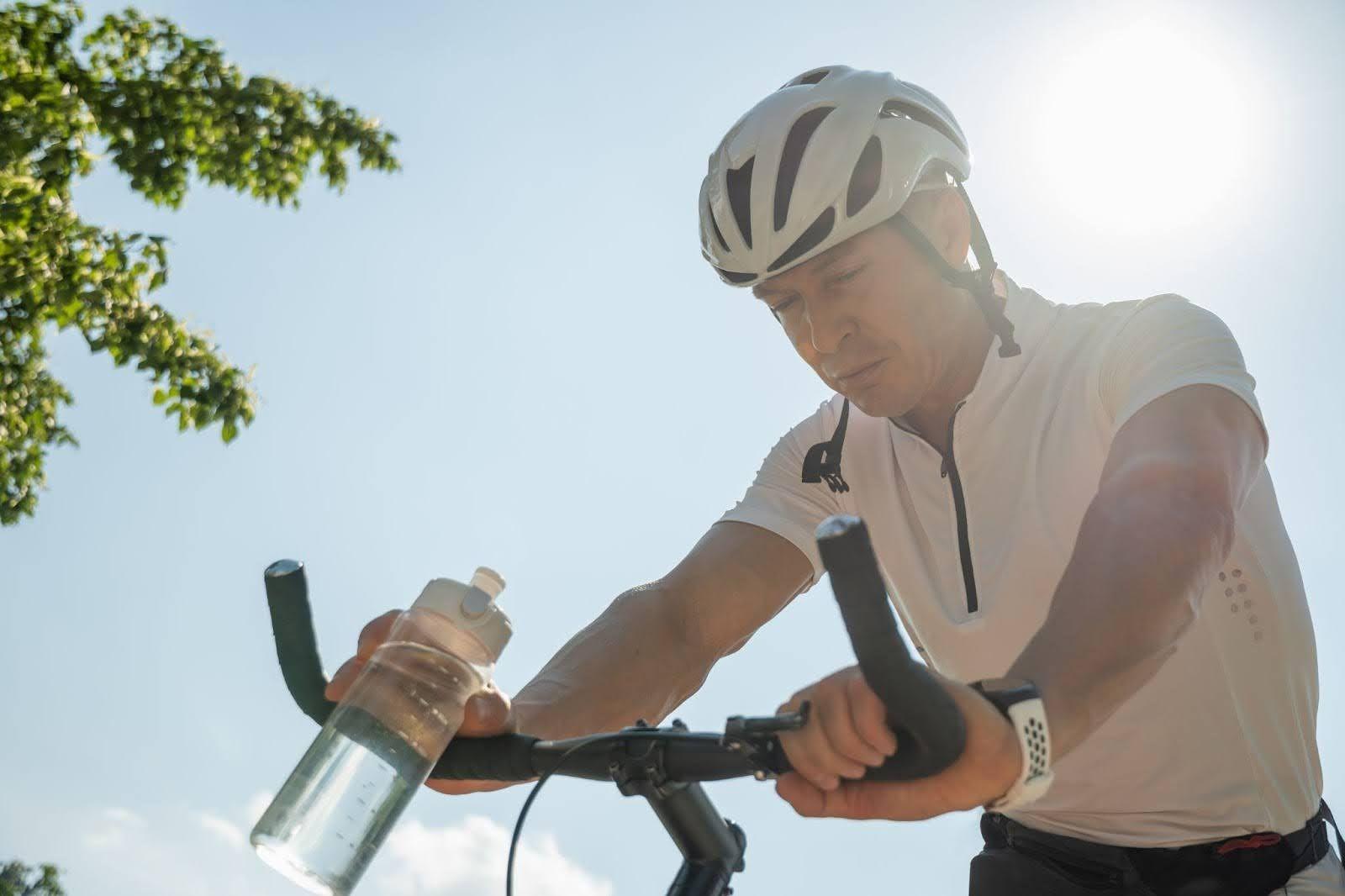
Indoor Sweet Spot training: How ROUVY makes it easy
Sweet Spot indoors has unique advantages: precision, repeatability and focus. The ROUVY app enhances this with immersion:
Structured workouts: Sweet Spot sessions built into the app.
ERG mode: Keeps you in the correct power range without drifting.
Real routes: Ride famous climbs while targeting Sweet Spot.
Ghost riders and pacers: Push you to stay consistent.
Custom workouts: ROUVY enables you to generate your own Sweet Spot cycling workouts, or choose them from the expansive workouts section.
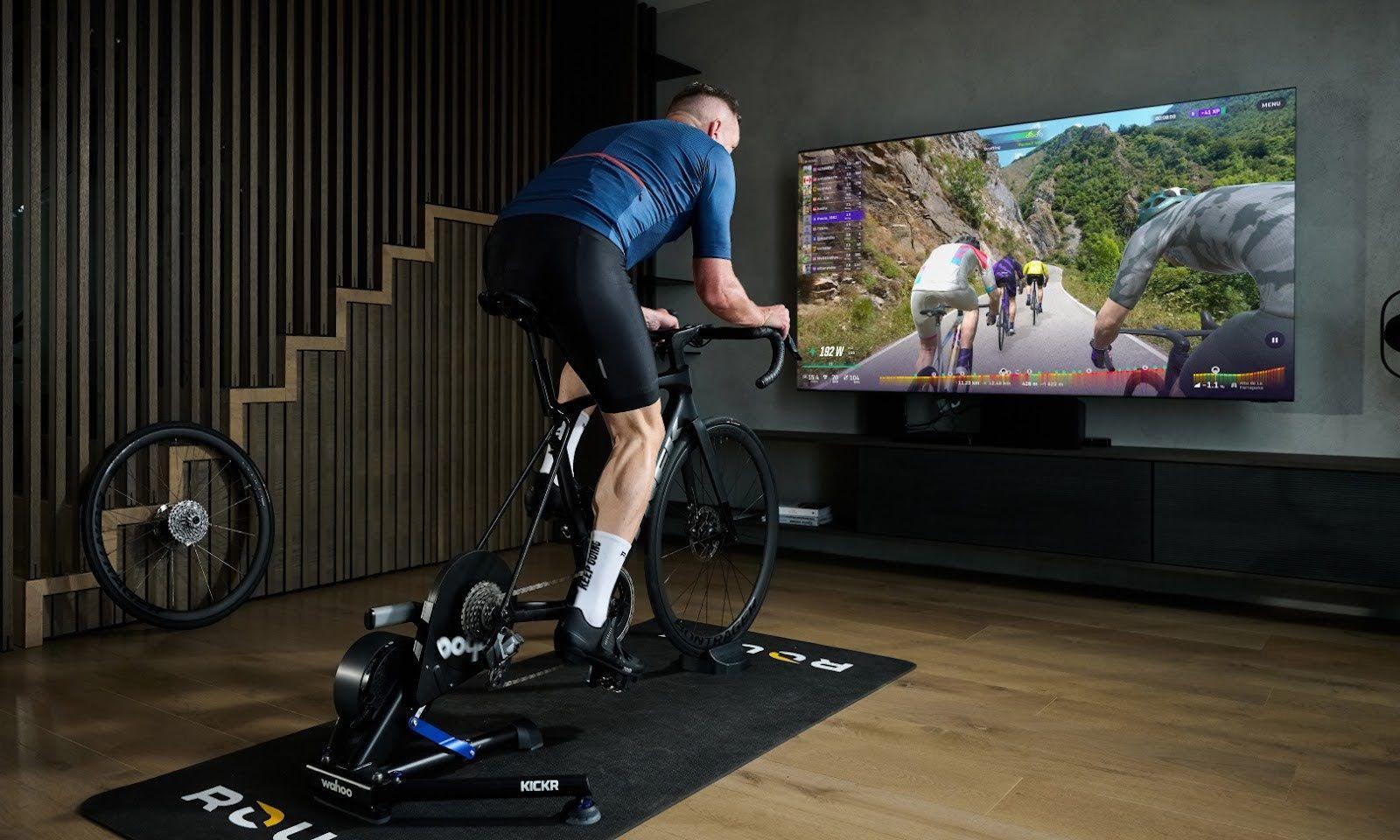
From coaching, I’ve noticed athletes who use ROUVY stick to their zones far better than those trying outdoors alone. Indoors, conditions are controlled. On ROUVY, they’re also enjoyable. One rider I coach used to dread indoor sessions. With ROUVY, he now looks forward to climbing mountains in Sweet Spot, chasing ghost riders, and comparing week-to-week improvements. That consistency has been the biggest factor in his performance gains.
Integrating Sweet Spot training into your cycling plan
Sweet Spot is powerful – but only when it’s part of a balanced program. Think of it as one ingredient in the recipe, not the whole meal. Used wisely, it can be the backbone of your base and build training phases.
Base phase (winter / early season)
This is where Sweet Spot shines. Cold, dark days make long Zone 2 rides difficult, but Sweet Spot condenses those benefits into shorter, more manageable sessions. Two or three Sweet Spot cycling workouts per week in this phase can create a huge aerobic foundation.
Here’s a sample weekly structure (8 hours):
- Monday: Rest.
- Tuesday: 2×20 minutes Sweet Spot (90 minutes total).
- Wednesday: 90 minutes Zone 2.
- Thursday: 3×12 minutes Sweet Spot (75 minutes total).
- Friday: Rest.
- Saturday: 3-4 hours endurance.
- Sunday: 2×15 minutes Sweet Spot within a two-hour ride.
Build phase (spring)
Here, I reduce Sweet Spot slightly and bring in higher intensity like VO2 max intervals. Still, one or two Sweet Spot workouts per week maintain FTP gains and endurance.
Example weekly structure (10 hours):
- Tuesday: 2×15 minutes Sweet Spot.
- Thursday: 5×4 minutes VO2 max intervals.
- Saturday: Group ride or race simulation.
- Sunday: 3×20 minutes Sweet Spot within a three-hour ride.
Race season
Sweet Spot shifts into maintenance mode. Depending on the rider’s needs and goals, one session per week is usually enough. The priority becomes sharpening with VO2, anaerobic and sprint sessions.
- Example: Mid-week 2×20 Sweet Spot to maintain durability, plus high-intensity weekend racing or race simulation.
Seasonal integration
I typically recommend:
- Winter/Base: 40-50 percent of sessions as Sweet Spot.
- Build: 20-30 percent Sweet Spot, more intensity added.
- Race: 10-20 percent Sweet Spot, mainly for maintenance.
Nutrition & recovery for effective Sweet Spot training
Sweet Spot is less fatiguing than threshold or VO2 max, but can still be demanding. Without the correct fuelling and recovery, you’ll blunt the adaptations over time and not recover as quickly for your next session.
Nutrition strategies
Before:
- Small carb-rich meal 2-3 hours before.
- Quick snack (banana, bar) 30-60 minutes before, if needed.
During:
- 40-60 grams of carbs per hour for 60- to 90-minute workouts.
- 60-90 grams of carbs per hour for longer sessions.
- Electrolytes, if sweating heavily indoors.
After:
20-30 grams of protein plus carbs within 30 minutes. Aim for 1-1.2 grams of carbohydrate per kilogram of bodyweight in the first two hours for glycogen restoration.
Recovery strategies
- Sleep: Aim for 7-9 hours.
- Active recovery: Easy spins at Zone 1 the day after a heavy Sweet Spot block.
- Strength/core training: Alternate days work well, but avoid stacking Sweet Spot plus heavy gym work on the same day.
- Avoid monotony: Two Sweet Spot days in a row can cause accumulated fatigue.
A coaching anecdote
I once worked with a sportive rider who under-fuelled his Sweet Spot workouts, treating them like “easy” endurance sessions. He consistently cracked mid or late interval. Once he increased his carb intake to 60 grams per hour, even indoors, his consistency improved and so did his FTP.
Cyclists share Sweet Spot success insights
Over many years of coaching, I’ve seen Sweet Spot training deliver breakthroughs for every type of rider and discipline from MTB, road, gravel and time trialing to cyclocross:
National champion: Used Sweet Spot as the foundation of winter and pre-race season training, then added intensity in build season. The durability gained from Sweet Spot was crucial in holding race-winning moves, particularly on long climbs.
Cyclocross racer: Struggled with late-race fatigue. Midweek Sweet Spot intervals built the resilience to sustain power after multiple laps of accelerations and technical sections.
Sportive rider (time-crunched): Replaced 4- to 5-hour weekend rides with 90-minute Sweet Spot sessions. She arrived at her gran fondo fresher, paced consistently and finished stronger than ever.
Masters rider (50+): Couldn’t handle high volume training due to family commitments. With Sweet Spot training, this helped raise his FTP by 15 percent in three months.
The pattern is clear: Sweet Spot works for every rider, whether you’re chasing a national title, targeting a gran fondo, or simply aiming to set a new personal best. The steady grind always pays off. But from my coaching experience, the physical effort is only half the equation.
Before starting any interval training session, it’s vital to anchor yourself to a goal. That might be as straightforward as committing to complete today’s workout, or as ambitious as visualising yourself crossing the line as a national champion. By framing each training session within the bigger picture, you transform it from “just another ride” into a deliberate step toward your objective.
This kind of mental preparation sharpens focus, helps build your resilience, and teaches you to push through discomfort when the intervals bite. Sweet Spot isn’t just training your legs, it’s training your mindset. And that mental toughness is every bit as valuable on event day as the watts you’ve gained.
On ROUVY, the combination of structure, realistic scenery, and feedback helps keep riders motivated week after week.
5 common misconceptions about Sweet Spot training
Despite its popularity, Sweet Spot still carries myths and misunderstandings. Let’s help clear them up here.
1. “Sweet Spot isn’t hard enough.” Wrong. Many new riders struggle after just a few minutes. It feels “doable” at first but accumulates fatigue quickly. The trick is to start with shorter intervals at a minimum cadence of 90 RPM and build the durations as you become more adapted to the zone.
2. “Sweet Spot replaces everything.” No training method is complete alone. Sweet Spot builds the foundation, but you still need Zone 2 endurance, VO2 max, anaerobic capacity and sprint training for all round fitness.
3. “More is better.” Too much Sweet Spot leads to stagnation or overtraining. Two to three sessions per week is plenty for most riders, depending on the time of year.
4. “It’s only for advanced riders.” False. Beginners can start with 5-minute Sweet Spot intervals. Even short sets are effective.
5. “Indoor Sweet Spot is boring.” Not on ROUVY. With thousands of real-world routes and ghost riders, Sweet Spot indoors can be immersive and motivating.
Conclusion & next steps
Sweet Spot training is one of the most efficient, effective methods for cyclists of all levels. By working at 88-94 percent of FTP, you stimulate mitochondrial growth, improve lactate clearance, and build the resilience needed for racing and endurance events – all without the crushing fatigue of constant threshold or VO2 max work.
From my coaching experience, Sweet Spot has been the cornerstone of progress for every type of rider. National champions, sportive riders, cyclocross racers, and masters athletes alike have all benefitted from its unique mix of intensity and sustainability.
The best way to implement Sweet Spot? Indoors, with structure. With ROUVY’s pro-designed workouts, real-world routes and ghost riders, you can nail Sweet Spot training with precision and enjoyment. No guesswork, no boredom, just consistent, effective training.
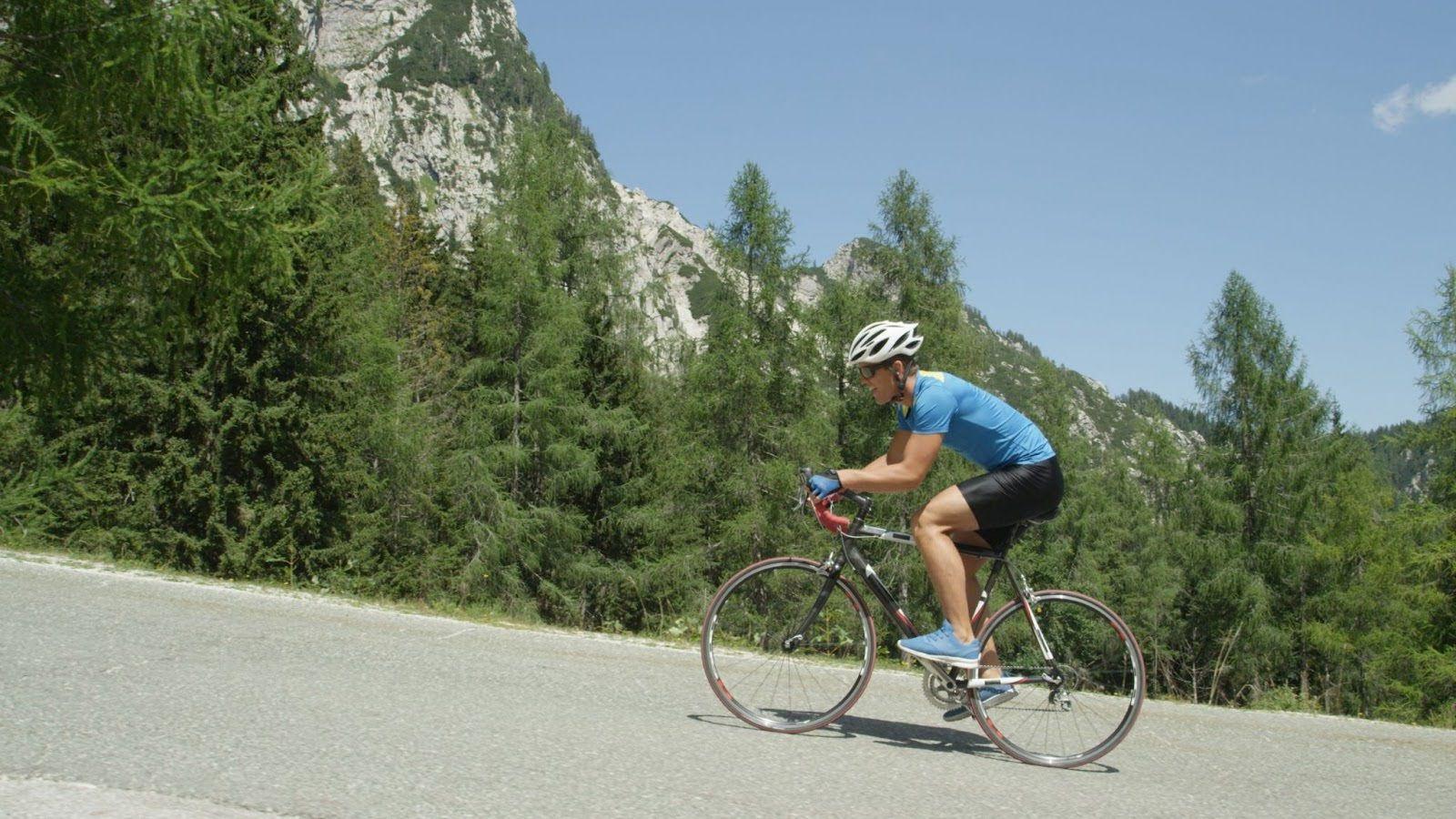
So next time you think of your “sweet spot,” don’t just picture the cafe stop. Picture yourself climbing some of the hardest mountains, holding 92 percent FTP on ROUVY, knowing that every pedal stroke is building power, endurance and resilience. Good luck – and keep going!

